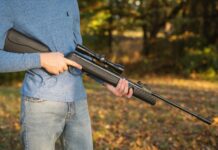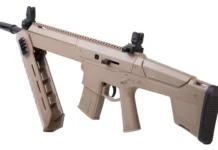
With hunting season in full swing and with more hunts around the corner, the archery ranges have been busier than ever. Folks are getting ready for upcoming hunts and some are possibly even trying to rectify some mishaps that might have recently happened in the field. All of us have been there a time or two. We’ve put in the range time ahead of season, scouted our tails off and continued to grind our way into the depths of our hunt all to arrive at that moment. That moment that we are all striving for. We get a great animal in front of us and hit them with our rangefinder. The reading is within our effective shooting distance back at the range, so we let it rip. Unfortunately, that’s all the ripping that takes place and our arrow sails harmlessly over the animal’s back.
“They were within my effective range! What happened?”
Hunting happened and your effective range might not be what you think it is.
Table of Contents
So, what is your effective range?

Before we dive into the meat and potatoes here, let’s look at effective range as a whole. What is it? Personally, I would define it as a distance in which the shooter can effectively place three arrows within a paper plate or kill zone of an animal. At which point distance wise they fail to do that, that point would be past their effective shooting range. That distance is going to vary from shooter to shooter, but the principle remains the same. One hunter’s effective range might be 40 yards, while another’s might be 80 yards. Experience, dedication to their craft and overall skill level seems to be what separates people here. No matter the case, it’s important that we are honest with ourselves here when we’re at the range. Take note of where you really start to see inconsistencies. That’s at the range, though. This tale doesn’t end at the range.
Your effective range in the field…
I am a firm believer that your effective range at the range is likely not your effective range in the field. Things are just different and there is no way for us to replicate the feeling of a live animal in front of us. This is the part that we get to practice the least out of this whole equation that is bowhunting. We don’t get to practice having the adrenaline rush that comes from a close encounter. There aren’t scenarios at the range where you are at full draw waiting for the right angle, all the while melting with anticipation.

At the end of that cycle, there is picking a spot and executing a good shot. The first few times I was ever at full draw on an animal, I remember actually aiming at the animal as a whole, not picking a spot—a common mistake among new bowhunters. We know these things before getting into the field, but, when we get there and are put in that situation, it’s almost as if you forget. For that reason, I think we need to eat some humble pie before heading in the field.

It is good practice, in my opinion, to subtract a bit off of what you determine your effective range is at the range. Let’s say 10 to 20 yards. So, if your effective range at the range is 80 yards, I’d say whittle that down to 60 yards during your hunt. There are just so many variables that have an effect on our shooting out there. The weather, a target that moves, the size of the animal, our own desires, poor shooting conditions, etc. Of course, this distance might increase through the years as you grow more comfortable with bowhunting and acquire more in the field practice. However, ice running through the veins is not a common trait. I’d also be pretty sad if, one day, bowhunting encounters don’t excite me as they do today. It’s why we do it.
Practicing for game day

While we can’t replicate exactly what it is to be at full draw in the red zone of a big buck, I do think there are some things that we can do to practice for game day. Instead of standing with perfect archery form, try sitting or kneeling for your shot. You could try sitting with your legs out to the side, in front of you or even crossed. What about shooting with one foot up on a rock while the other is planted on the ground? Each of these things throw off our balance, which is a highly likely scenario in a hunting situation. Try shooting at your maximum effective shooting distance in some of these positions. You might be surprised. While you’re at it, try holding at full draw for 30 seconds to a minute and then shoot at your maximum effective distance. Actually, before you do that, sprint to the target and back or do 20 burpees to elevate your heart rate a bit. Oh! And when you shoot, don’t aim at a bullseye. Pick a spot and aim at a random place on the target. 3D targets are great for this. In the end, my money is on that effective shooting distance not being exactly what you thought it was.
Closing thoughts

In no way, shape or form am I knocking long-range bowhunting with this piece. I’ve said it before and I’ll say it again: If you can do it, you can do it. Getting to that point, though, doesn’t come without a little reflection. These are merely thoughts on some possible healthy reevaluations that we can look at. As hard as bowhunting is, we don’t get opportunities out the wazoo for filling tags. Each animal that we are so fortunate to bring home is one that doubtfully came from little to no work. It takes dedication to be consistently successful with a bow and, along the way, it pays for us to truly know what we are and are not capable of. Knowing this is going to provide us with a better experience overall and the quickest death possible for the game we pursue. We are predators and it is on us to be good ones.












































